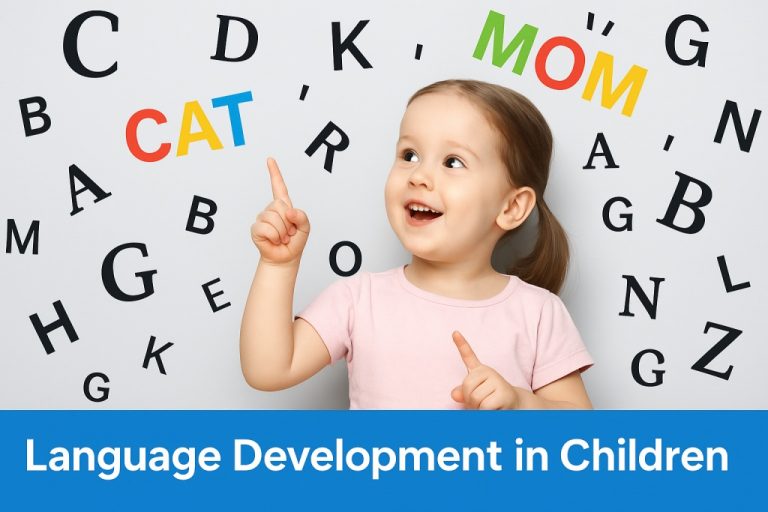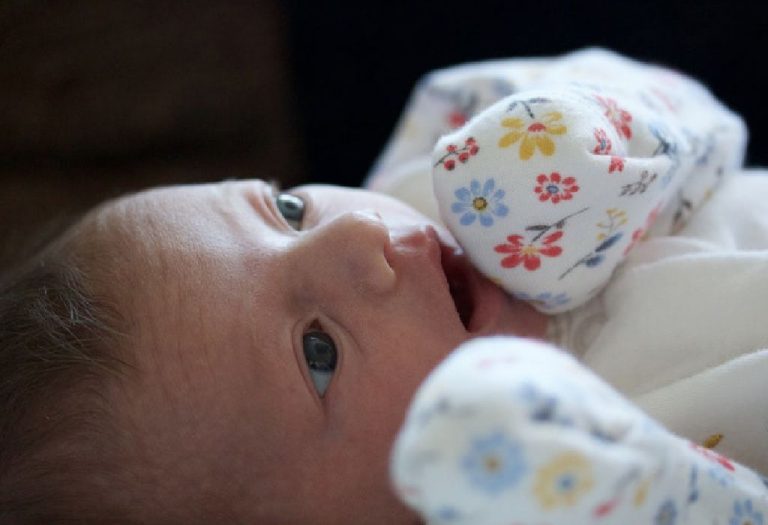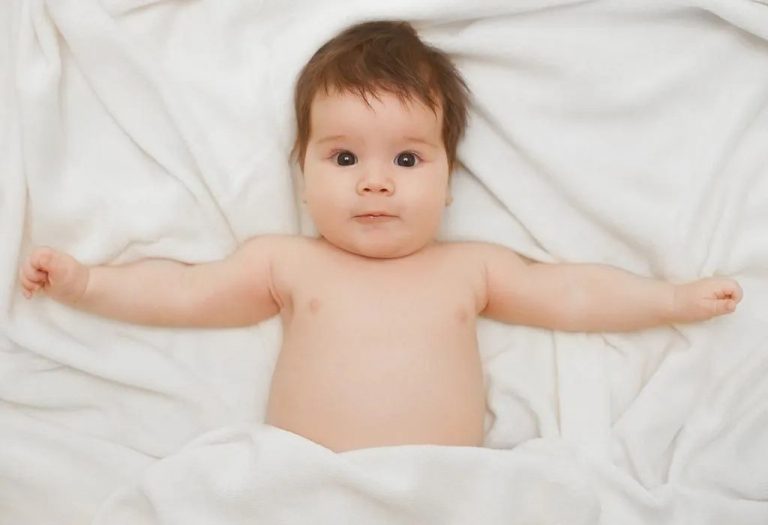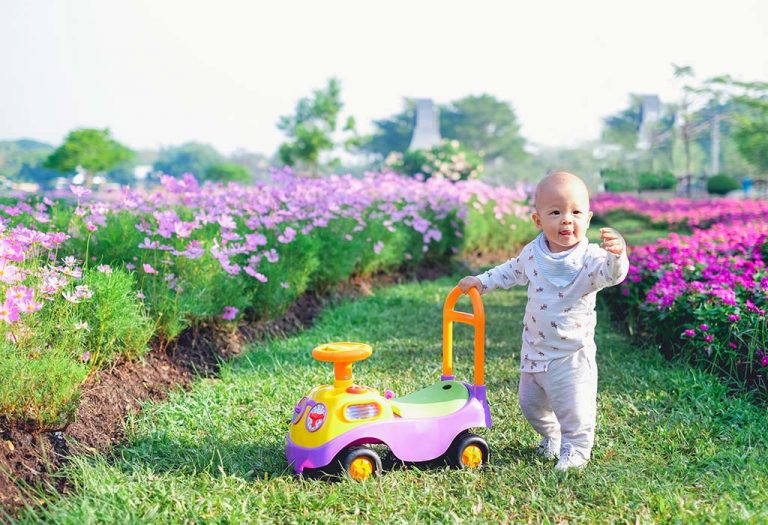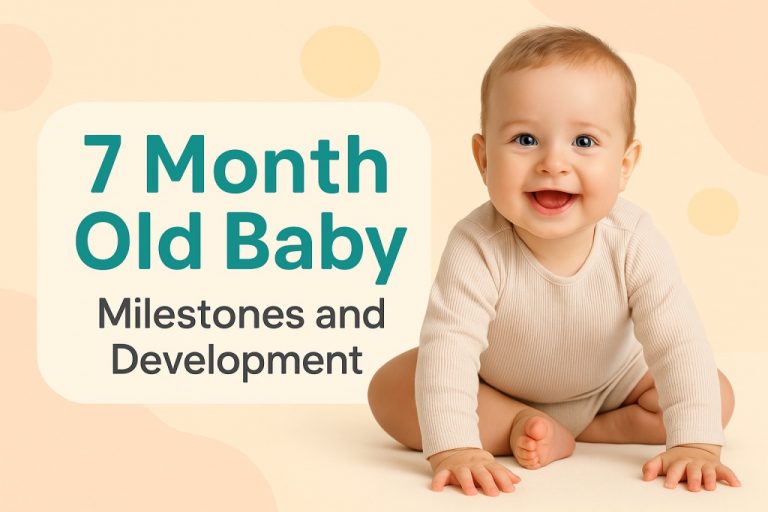Creeping Vs Crawling – Know The Difference
Little ones grow way too fast, and many times, we lose track of their development while adoring them. It is, however, important to note the important milestones they go through so we know they are on the right track. Creeping and crawling are two important developmental milestones that indicate progress. There is a fine difference between the two, but many times, parents mistake baby creeping and baby crawling the same. Our mission today is to make you understand creeping vs crawling, and why knowing this makes a huge difference! While moving forward using arms and legs with belly touching the floor is crawling, moving forward on hands and knees with belly up is creeping.
If your baby isn’t already creeping or crawling by the age of 7 to 9 months old, try getting some toys and encourage them to move around. If they still don’t, something might be wrong, and you might need to have a word with the paediatrician. However, if they do – then there’s nothing to worry about. Here’s a simple distinction of creeping vs crawling in detail below.
What Is the Difference Between Baby Creeping and Crawling?
Want to know the difference between creep and crawl? Many parents don’t know the difference between creeping and crawling. The biggest reason is that the two look very similar at first glance. In the case of crawling, the child’s stomach stays in contact with the ground as he moves around. Which makes creeping the next progression when they lift it off the ground. Either way, if your child has already begun doing either of them, it’s a good sign.
When babies creep or crawl, it’s a sign that they are growing mentally, emotionally, and physically. Babies relish the freedom of being able to move around. And as a parent, it’s your responsibility to encourage them. As your baby continues to move more and more, they will slowly learn how to stand up and take their first steps.
Here are the differences you need to be aware of regarding both creeping and crawling.
1. Crawling

Crawling is the movement your baby does when his tummy is on the floor. He pulls his body, using his hands and knees, with his stomach touching the floor. There are various crawling methods out there, namely four common ones – reaching out with one arm and pulling with the other, using both elbows to pull the body forward, pulling your baby forward using one elbow at a time and finally, moving forward using both hands and knees (or crawling on the tummy).
Why Does It Matter?
Crawling matters because it tells you the following things about your baby:
- Your baby’s upper body strength is building.
- Your baby is learning how to balance his body and getting the hang of moving around.
- Their fine motor skills are building alongside spatial awareness.
- Primitive reflexes are getting better.
- Neurological development is taking place, and they are starting to become more aware of their environment.
- Your baby is getting the hand of hand-eye coordination and understanding how to move their limbs (1).
2. Creeping
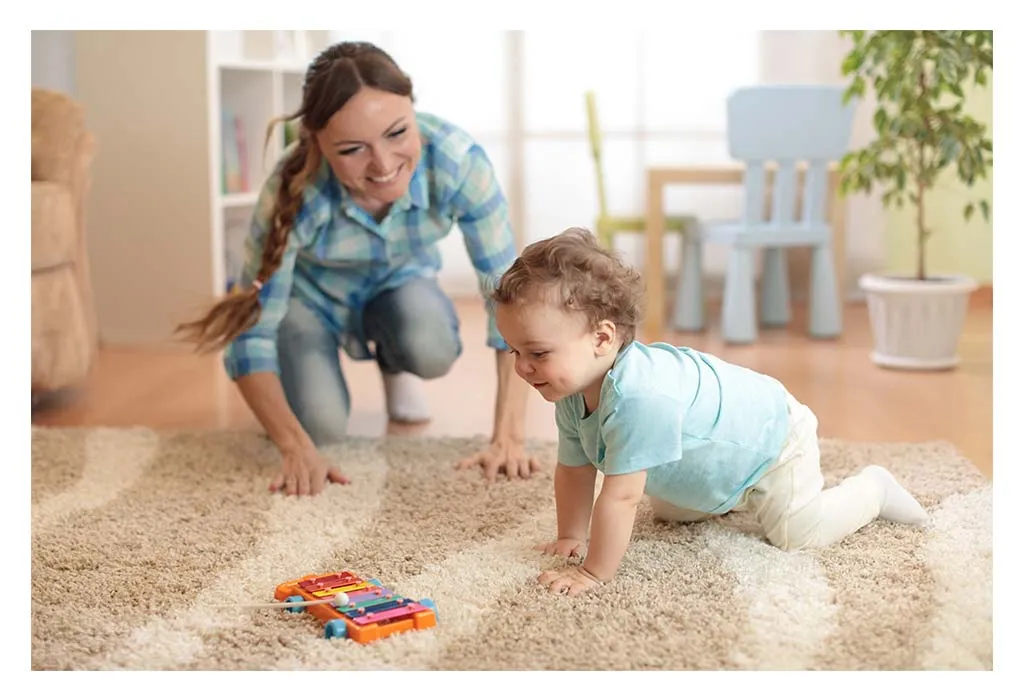
Creeping comes after crawling. It’s the second stage, and after creeping, your baby will transition to walking. Isn’t that exciting?
How do you know your baby has begun creeping? The first telltale sign is when they lift their tummy off the floor and begin moving around using their hands and knees. Most parents confuse creeping and crawling and mix the two, but they’re different. Watch out for their tummy; you’ll know the difference immediately.
Why Does It Matter?
Creeping matters because it tells you a lot of things about your baby. For starters:
- Your baby’s arms, feet, back, and upper body muscles have developed (2).
- They are getting ready to move to the next stage, that is, walking.
- Their coordination skills and sense of rhythm are improving.
- Visual and proprioception skills are improving.
- They are also getting better at conceptual thinking and gross motor skills.
Should You Worry if Your Baby Isn’t Crawling or Creeping Yet?
It is common for babies to generally reach these physical milestones by 9 months of age (3). However, if your little one is a late bloomer (we mean late creeper or crawler), there is no reason to panic. Every child is unique and has a unique pattern of growth and development. Let them develop at their own pace. Give them the necessary nutrition required for growth and proper assistance in helping them crawl and creep, and your little one will be fine. However, if, even after all necessary measures, you seem to notice any abnormality or simply delayed growth, consult a paediatrician.
FAQs
1. Why is crawling important for your baby?
Crawling is an essential physical milestone for better body and hand coordination, body balance, learning primitive reflexes, and strengthening body muscles.
2. Why is creeping important for your baby?
Creeping is important for the better development of fine motor skills, visual skills, conceptual skills, and body coordination.
3. What are the different names of creeping?
Gliding, inchworming, slithering, scooting, and shuffling are popular terms used for creeping.
4. What are different types of crawling?
There are two types of crawling: traditional crawling and commando crawling. In traditional crawling, the baby makes use of the hands and knees to crawl, whereas, in commando crawling, the baby uses arms to propel the body forward, just like they do in army.
Creep vs crawl in babies is not to be confused with. Don’t get worried if your baby is crawling and has not transitioned to creeping as yet. It takes time for young tots, and the best thing you can do as a parent is to encourage them. Just make sure you notice and see if they’re getting the movements right. If they aren’t, do it yourself and show it to them. Babies are excellent learners and learn best by copying. According to a study, babies who were trained in crawling apparently learned to creep significantly earlier than the other group of babies who weren’t trained. So, smile, have fun watching your child grow, and be amazed when they transition to taking their first steps. Until then, enjoy your baby’s crawling or creeping phase!
References/Resources:
1. Goldfield, E. C.; Transition from rocking to crawling: Postural constraints on infant movement. Developmental Psychology; 25(6), 913–919; https://doi.org/10.1037/0012-1649.25.6.913; https://psycnet.apa.org/record/1990-09454-001; 1989
2. Lagerspetz. K., Nygåkd. M, Strandvik. C; The effects of training in crawling on the motor and mental development of infants; Scand. J. Psychol; Wiley Online Library; https://onlinelibrary.wiley.com/doi/abs/10.1111/j.1467-9450.1971.tb00623.x, September 1971
3. Baby Milestones – When Babies Sit Up, Roll Over and Crawl; Help Me Grow; https://helpmegrowmn.org/HMG/HelpfulRes/Articles/BabyMilestones/index.html
When Do Babies Roll Over?
When Do Babies Hold Their Heads Up?
Baby Crawling Backwards – Is it Normal?
Normal Reasons Baby Might Not Be Crawling
Was This Article Helpful?
Parenting is a huge responsibility, for you as a caregiver, but also for us as a parenting content platform. We understand that and take our responsibility of creating credible content seriously. FirstCry Parenting articles are written and published only after extensive research using factually sound references to deliver quality content that is accurate, validated by experts, and completely reliable. To understand how we go about creating content that is credible, read our editorial policy here.






